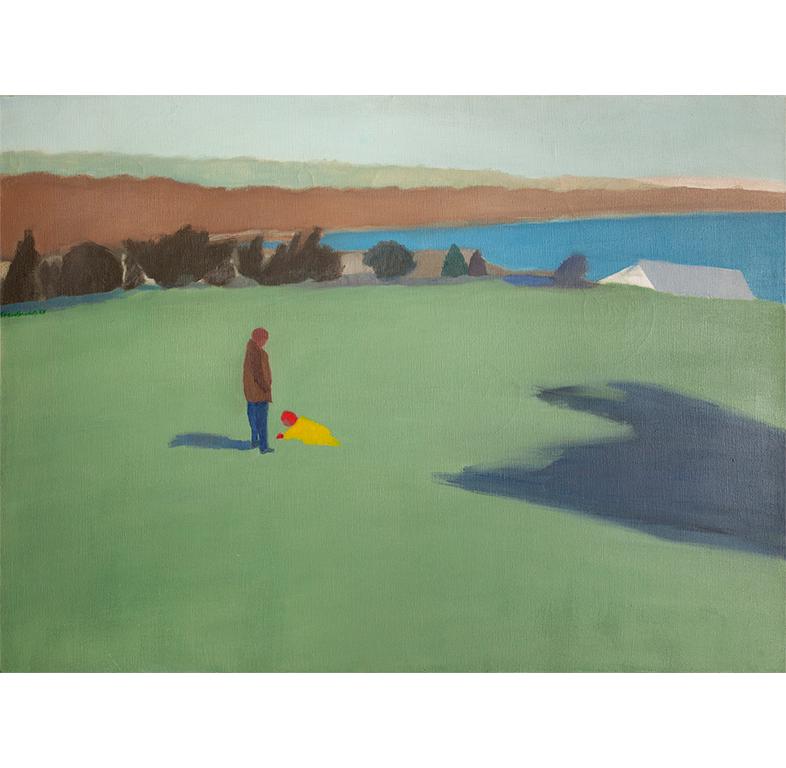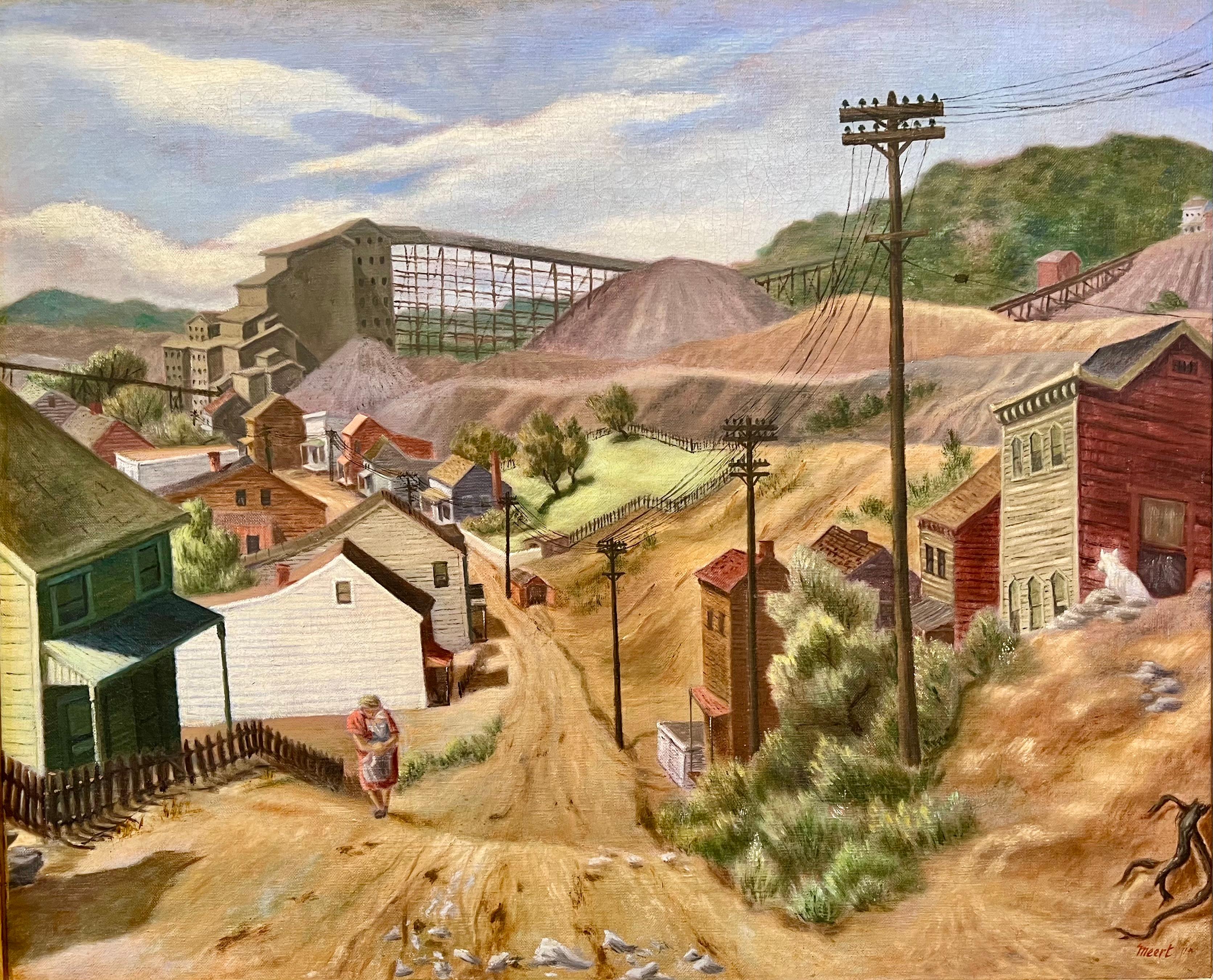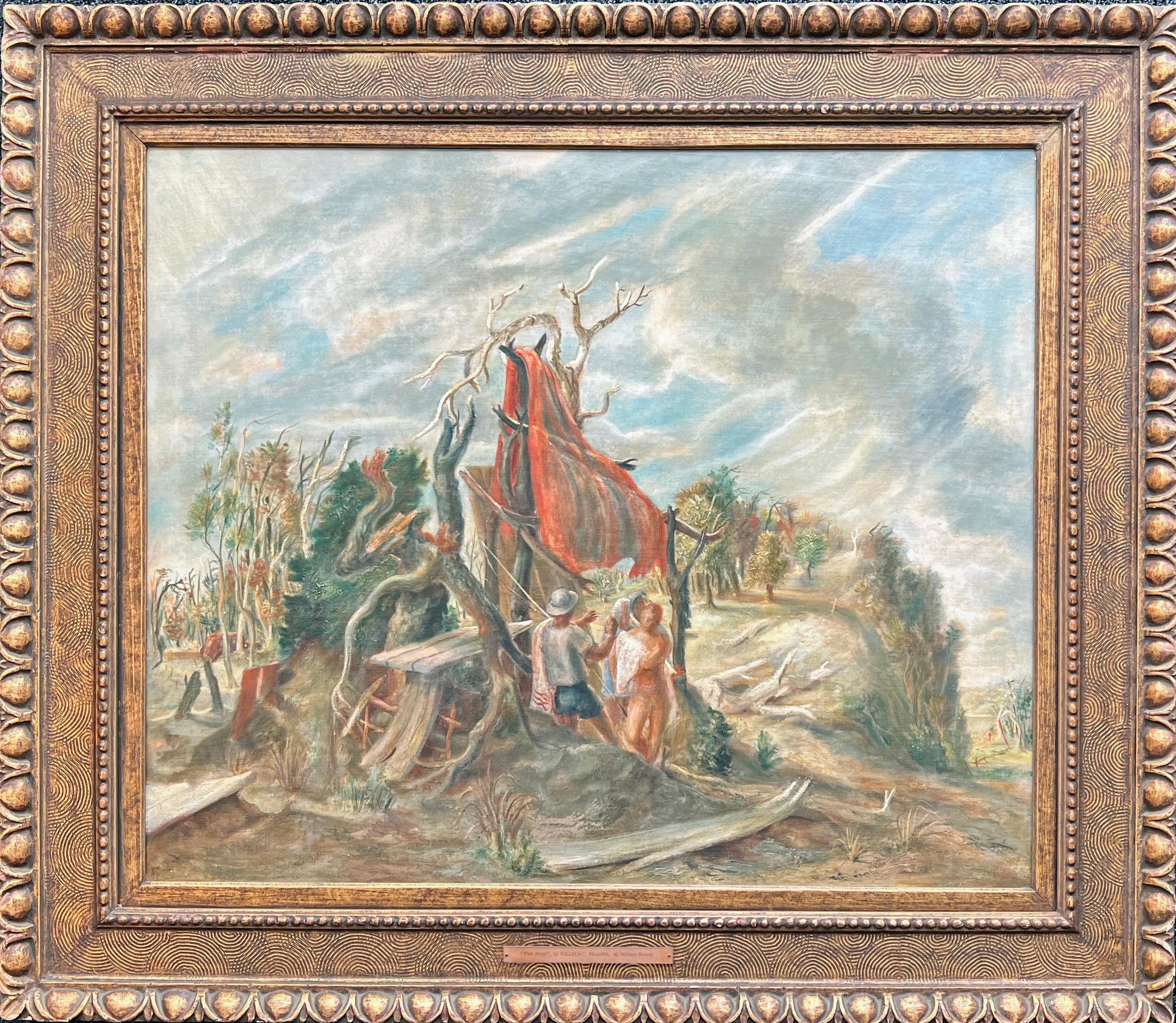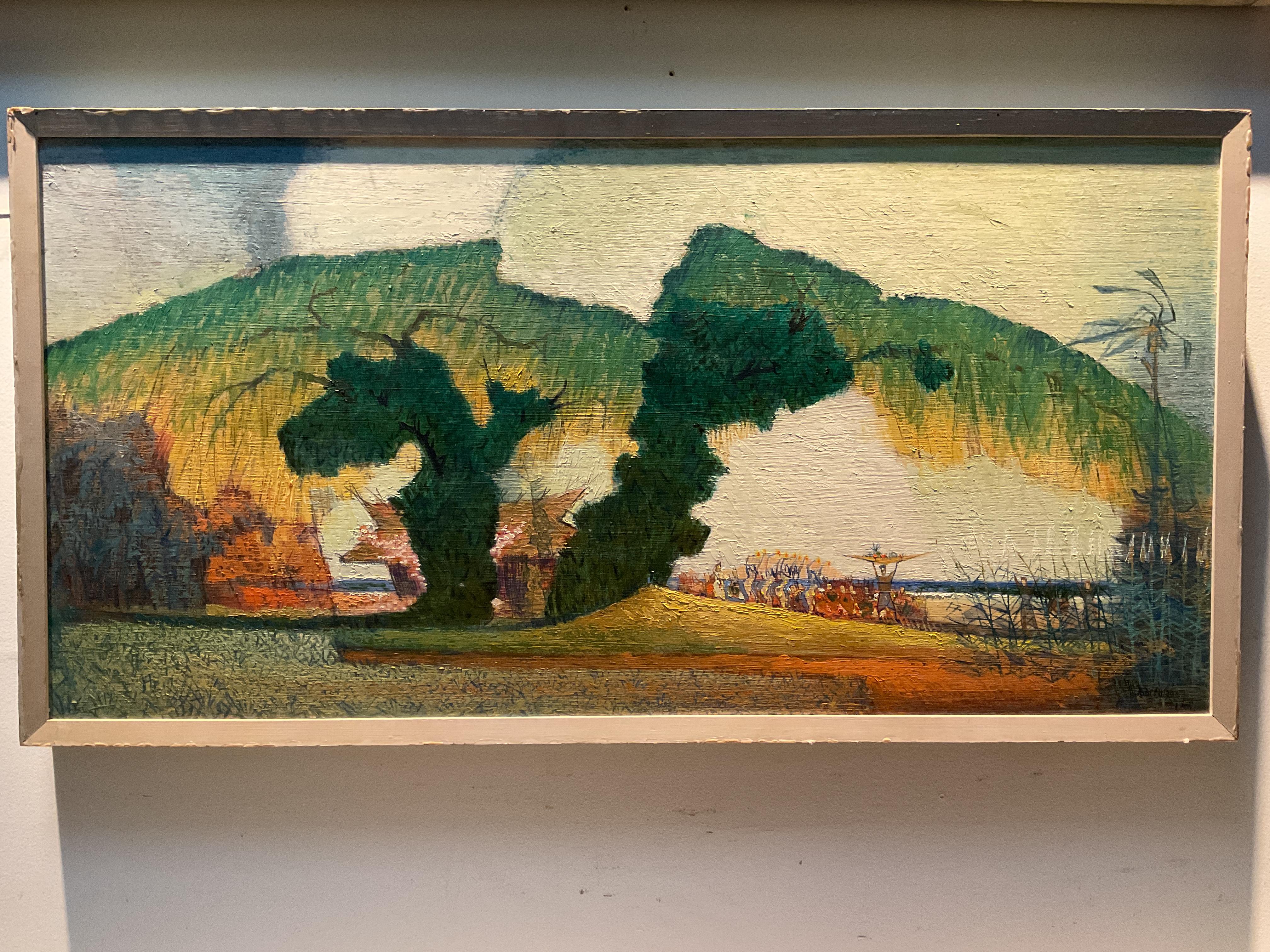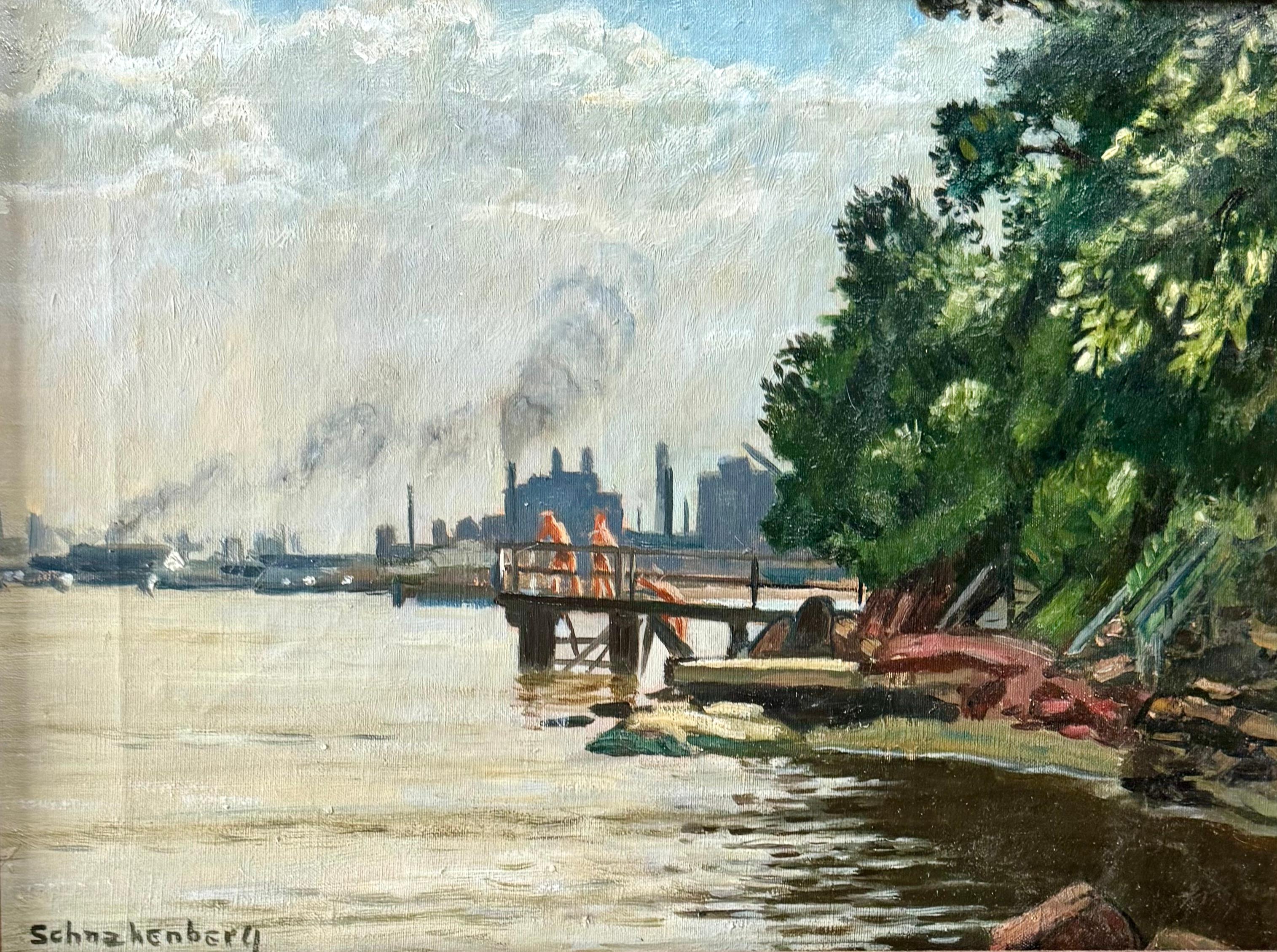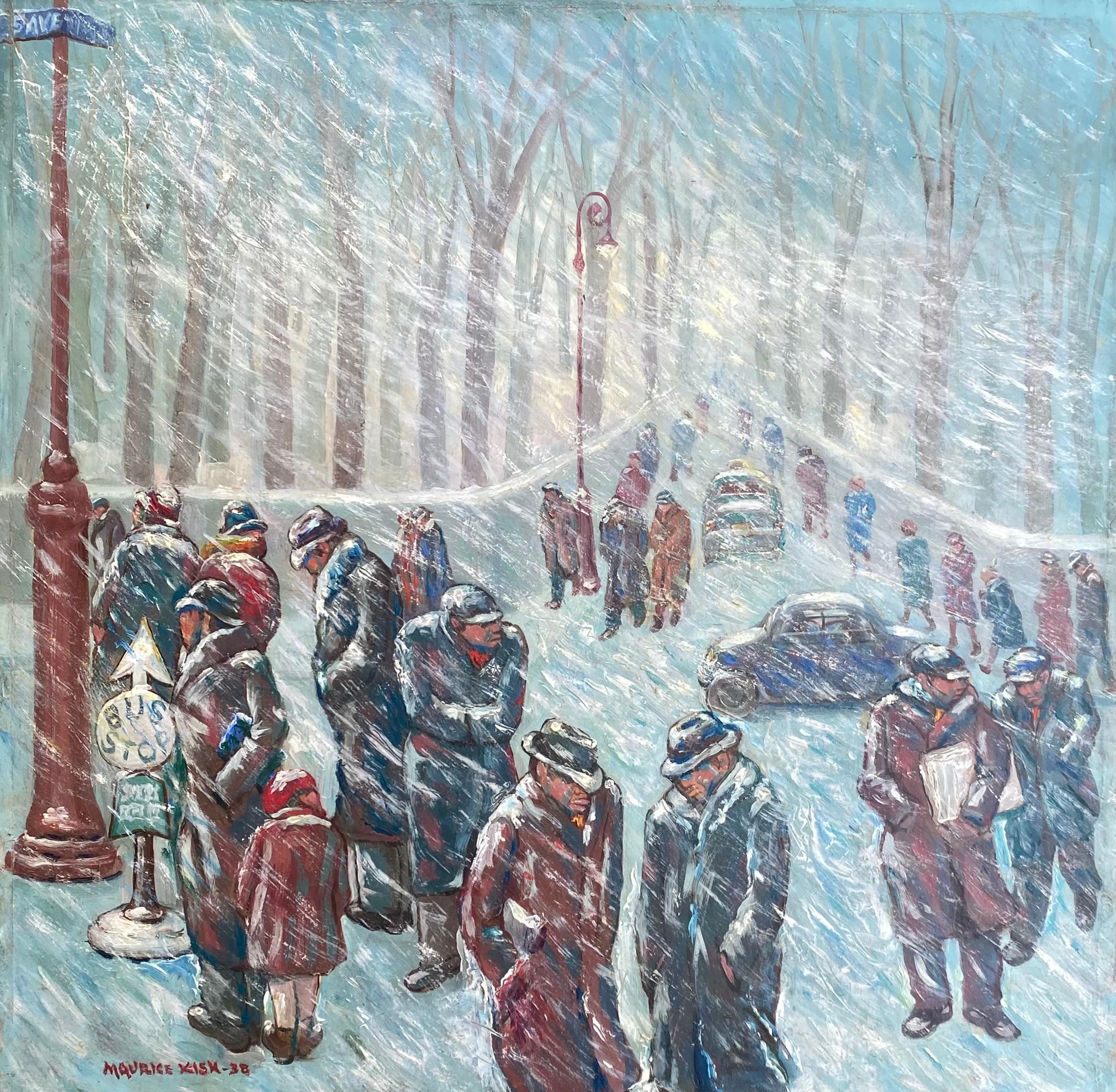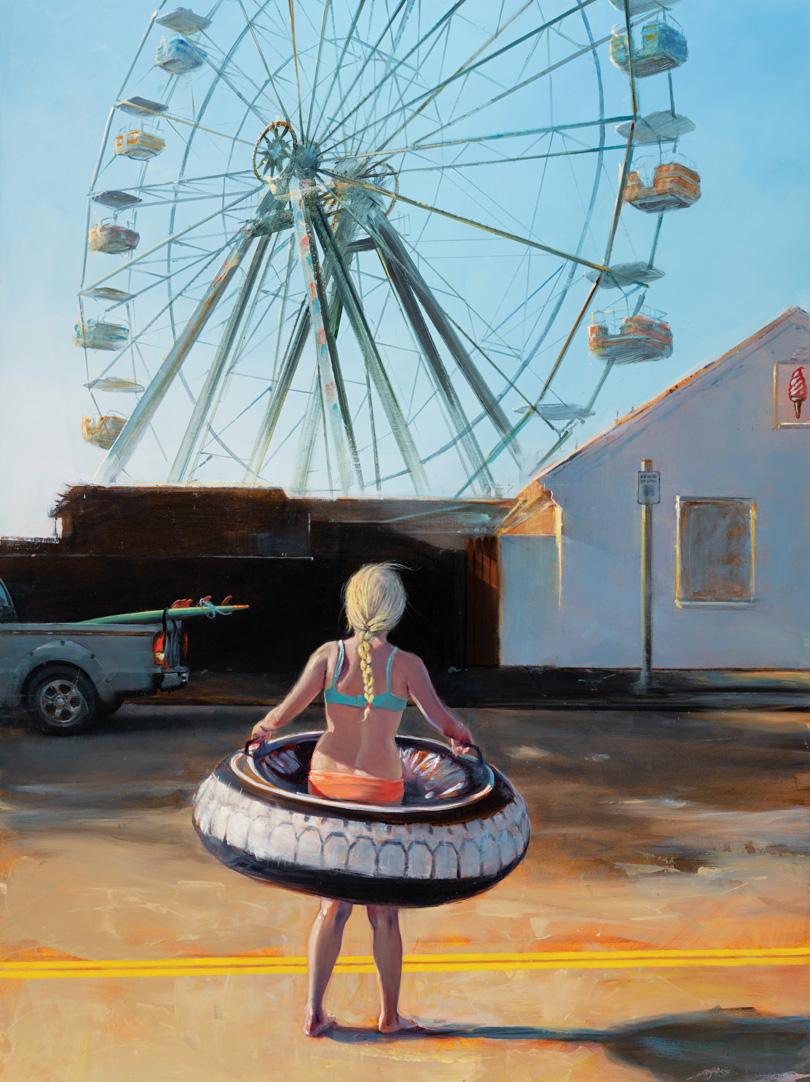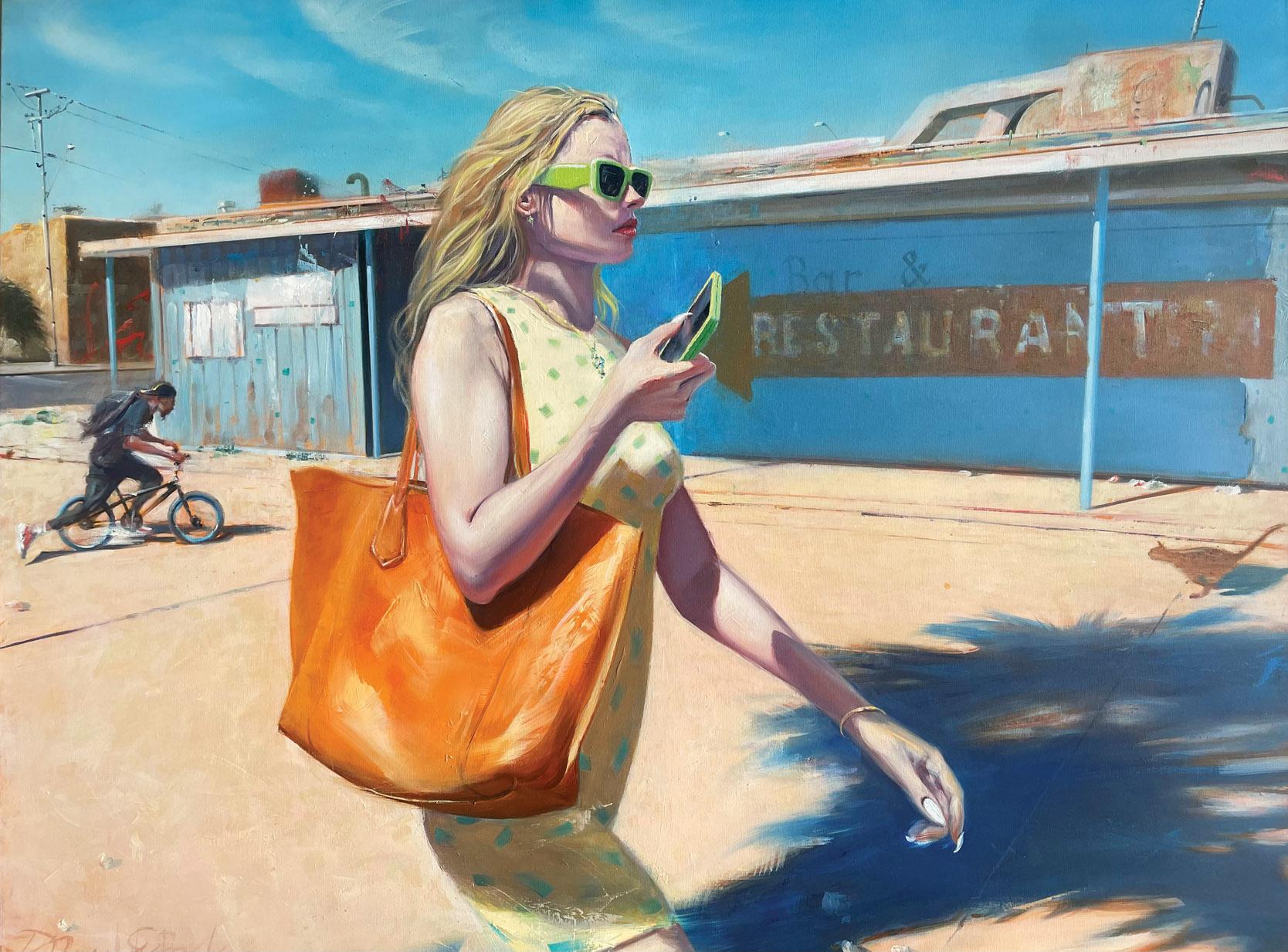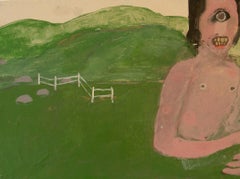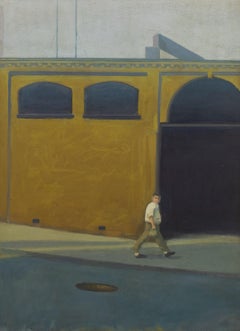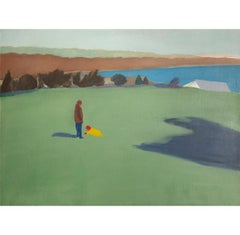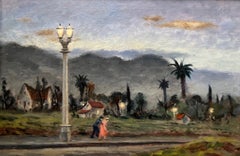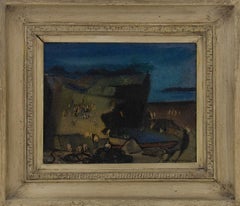
Bathers--Abandoned Quarry
View Similar Items
Want more images or videos?
Request additional images or videos from the seller
1 of 3
Joseph De MartiniBathers--Abandoned Quarry
About the Item
- Creator:Joseph De Martini (1896 - 1984)
- Dimensions:Height: 9.5 in (24.13 cm)Width: 12 in (30.48 cm)
- Medium:
- Movement & Style:
- Period:
- Condition:
- Gallery Location:New York, NY
- Reference Number:1stDibs: LU93235988652
About the Seller
5.0
Gold Seller
These expertly vetted sellers are highly rated and consistently exceed customer expectations.
Established in 2000
1stDibs seller since 2018
236 sales on 1stDibs
Typical response time: 1 hour
More From This SellerView All
- CyclopsBy Scott Daniel EllisonLocated in New York, NYAcrylic on canvas Signed and dated, verso This artwork is offered by ClampArt, located in New York City. Since childhood Scott Daniel Ellison has had a fascination with the unknown...Category
Early 2000s Other Art Style Figurative Paintings
MaterialsCanvas, Acrylic
Price Upon Request - Solitary MisterBy John ButtonLocated in New York, NYSolitary Mister 1964 Oil on canvas 52 x 38 inches (132.1 x 96.5 cm) This work is offered by CLAMP in New York City.Category
1960s American Modern Paintings
MaterialsCanvas, Oil
- SpringBy Konrad CramerLocated in New York, NYOil on masonite Signed and dated, l.r. This painting is offered by ClampArt, located in New York City. About the artist: Konrad Cramer grew up in Wurtzburg, Germany, and attended the Karlsruhe Academy. He was a member of Der Blaue Reiter...Category
1940s Modern Abstract Paintings
MaterialsMasonite, Oil
- A Case for the Sacredness of SomethingBy John BrooksLocated in New York, NYJohn Brooks “A Case for the Sacredness of Something” 2023 Oil on canvas 48 x 36 inches Contact gallery for price. This work is offered by CLAMP in New...Category
2010s Contemporary Paintings
MaterialsOil, Canvas
Price Upon Request - Black Rush: Self Portrait with VanitasLocated in New York, NYThis work by Anthony Peyton Young is offered by CLAMP in New York City.Category
2010s Contemporary Paintings
MaterialsCanvas, Oil
- TripodBy Anthony GoicoleaLocated in New York, NYAnthony Goicolea “Tripod” 2023 Oil, cold wax, and sand on linen 20 x 20 inches Contact gallery for price. This work is offered by CLAMP in New York City.Category
2010s Contemporary Paintings
MaterialsRaw Linen, Wax, Oil
Price Upon Request
You May Also Like
- Southdown Field at Long Island Sound Beach Parent and childBy Stan BrodskyLocated in Brookville, NYThis large green field overlooking the Long Island Sound Beach depicts a parent without definition, mother or father, observing their child in the gr...Category
1960s American Modern Figurative Paintings
MaterialsOil
- Six O'ClockLocated in Los Angeles, CASix O-Clock, c. 1942, oil on canvas, 30 x 20 inches, signed and titled several times verso of frame and stretcher (perhaps by another hand), marked “Rehn” several times on frame (for the Frank K. M. Rehn Galleries in New York City, who represented Craig at the time); Exhibited: 1) 18th Biennial Exhibition of Contemporary American Oil Paintings from March 21 to May 2, 1943 at The Corcoran Gallery of Art in Washington, D.C. #87, original price $450 (per catalog) (exhibition label verso), 2) Craig’s one-man show at the Frank K. M. Rehn Galleries, New York City, from October 26 to November 14, 1942, #10 (original price listed as $350); and 3) Exhibition of thirty paintings sponsored by the Harrisburg Art Association at the State Museum of Pennsylvania in Harrisburg in March, 1944 (concerning this exhibit, Penelope Redd of The Evening News (Harrisburg, Pennsylvania) wrote: “Other paintings that have overtones of superrealism inherent in the subjects include Tom Craig’s California nocturne, ‘Six O’Clock,’ two figures moving through the twilight . . . .” March 6, 1944, p. 13); another label verso from The Museum of Art of Toledo (Ohio): original frame: Provenance includes George Stern Gallery, Los Angeles, CA About the Painting Long before Chris Burden’s iconic installation outside of the Los Angeles County Museum of Art, Urban Light, another artist, Tom Craig, made Southern California streetlights the subject of one of his early 1940s paintings. Consisting of dozens of recycled streetlights from the 1920s and 1930s forming a classical colonnade at the museum’s entrance, Burden’s Urban Light has become a symbol of Los Angeles. For Burden, the streetlights represent what constitutes an advanced society, something “safe after dark and beautiful to behold.” It seems that Craig is playing on the same theme in Six O-Clock. Although we see two hunched figures trudging along the sidewalk at the end of a long day, the real stars of this painting are the streetlights which brighten the twilight and silhouette another iconic symbol of Los Angeles, the palm trees in the distance. Mountains in the background and the distant view of a suburban neighborhood join the streetlights and palm trees as classic subject matter for a California Scene painting, but Craig gives us a twist by depicting the scene not as a sun-drenched natural expanse. Rather, Craig uses thin layers of oil paint, mimicking the watercolor technique for which he is most famous, to show us the twinkling beauty of manmade light and the safety it affords. Although Southern California is a land of natural wonders, the interventions of humanity are already everywhere in Los Angeles and as one critic noted, the resulting painting has an air of “superrealism.” About the Artist Thomas Theodore Craig was a well-known fixture in the Southern California art scene. He was born in Upland California. Craig graduated with a degree in botany from Pomona College and studied painting at Pamona and the Chouinard Art School with Stanton MacDonald-Wright and Barse Miller among others. He became close friends with fellow artist Milford Zornes...Category
1940s American Modern Landscape Paintings
MaterialsCanvas, Oil
$12,500 - Gold Mine, Central City, ColoradoBy Joseph MeertLocated in Los Angeles, CAThis painting is part of our exhibition America Coast to Coast: Artists of the 1930s Goldmine, Central City, Colorado, oil on canvas, 36 x 28 inches, c. 1936, signed lower right, ex collection of Platt Fine Art, Chicago, Illinois (label verso). About the Painting Joseph Meert’s painting, Goldmine, Central City, Colorado, depicts the short-lived resurrection of a once prominent city just outside Denver. Central City was founded in 1859 soon after John Gregory struck gold in the area. As word spread, thousands of miners converged into “Gregory’s Gulch” and its surroundings became known as the “richest square mile on earth.” Mining production quickly increased resulting in Central City to becoming Colorado’s largest city in the early 1860s. Despite some technical difficulties transitioning to lode mining and the rise of competition from Leadville, Central City remained an economic boom town through the turn of the century. But, with every boom, there is a bust. World War I marked the end of Central City’s prominence as ore production ground to a halt and by 1925, the town’s population shrank to only 400 people. The desperation of the Great Depression and a nearly 100% increase in the price of gold lured labor and capital back to Central City. Meert painted in Colorado during the mid-1930s, a time when he created his most desirable works. It is during this period of renaissance that Meert captures one of Central City's outlying dirt streets bordered by 19th century wooden houses from the town's heyday and the more recently installed electric lines leading to a distant gold mine. A lone figure trudges up the hill, a mother with a baby in her arms, putting us in mind of the rebirth of the town itself. Meert had solo exhibitions at the Colorado Springs Fine Arts Center in 1936 and the Denver Art Museum. Although it is not known whether Goldmine, Central City was included in either of these exhibitions, it seems likely. Moreover, the painting is closely related to Meert’s painting, The Old Road, which was painted in 1936 and exhibited at the Corcoran Gallery of Art in Washington, DC and at the Dallas Museum of Art. About the Artist Joseph Meert was a well-regarded painter and muralist, who initially made a name for himself in the American Scene and later as an abstract expressionist. Although initially successful, Meert struggled financially and with mental illness later in life. He was born in Brussels, Belgium, but moved with his family to Kansas City, Missouri. As a child, a chance encounter at the Union Pacific Railyard changed his life. Meert happened upon a worker repainting and stenciling a design on a railroad car. Meert later recalled that this experience introduced him to the idea of being a painter. Without support from his father, Meert obtained a working scholarship to the Kansas City Art Institute. After four years at the Kansas City Art Institute, Meert studied seven years at the Art Students League and in Europe and Los Angeles. At the Art Students League, Meert fell under the spell of Thomas Hart Benton and Stanton MacDonald-Wright. In 1931, he befriended Jackson Pollock. By 1934, Meert was part of the Public Works of Art Project when he met his wife, Margaret Mullin...Category
1930s American Modern Landscape Paintings
MaterialsCanvas, Oil
- Fish Story oil painting by Williams Charles PalmerLocated in Hudson, NYThis painting is illustrated in the Catalogue of the 1945 Encyclopedia Britannica Collection of Contemporary American Painting, p.84. Written and edited by Grace Pagano. "Painting ...Category
Mid-20th Century American Modern Figurative Paintings
MaterialsOil, Canvas
- Stylish Hawaiian Luau Oil Painting by Listed artist Mario Larrinaga (1895-1979)Located in Baltimore, MDMario Larrinaga was born in Baja California in 1895 and moved with his brother to Los Angeles in 1909. He had no formal training in art, but had natural talent that was noticed by local movie studios. He was hired by Universal Studios as a designer, art director and creator of background scenes. He produced some of the background effects for King Kong in 1933. After a career in set design and illustration he focused on painting for pleasure in California, Mexico and Hawaii. He belonged to local art clubs and exhibited his works often. This stylized modernist work was likely created around 1960. It is oil on wood panel and of a horizontal format, 18” x 36”. It portrays a procession of seemingly Hawaiian natives...Category
Mid-20th Century American Modern Figurative Paintings
MaterialsOil
- Boys Swimming Industrial Landscape WPA Mid 20th Century Social Realism ModernismBy Henry Ernst SchnakenbergLocated in New York, NYBoys Swimming Industrial Landscape WPA Mid 20th Century Social Realism Modernism Henry Schnakenberg (1982 - 1970) Boys Swimming Industrial Landscape 11 1/2 x 15 1/2 sight Oil on Canvas Signed lower left 14 1/2 x 18 1/2 inches, Framed Bio In many cases, American artists visited the Armory Show in New York in 1913, and returned to their studios to react to or against what they saw. However, for Henry Ernest Schnakenberg it was much more life altering. Prior to visiting this important exhibition of American and European modernist art...Category
1940s American Modern Figurative Paintings
MaterialsOil, Canvas
Recently Viewed
View AllMore Ways To Browse
Vintage Bather
Vintage Bathers
Bathers Figurative
Martini Sign
Bather Oil
Bather Oil Painting
Oil Painting Bather
Quarry Painting
Martini Vintage Sign
Retro R Panel
Vintage New Mexico Painting
American Social Realism Painting
African American Folk Art
M Iv
Vintage Abstract Figurative Painting
Indian War Paintings
Nude Oil On Panel Paintings
Michael Challenger
